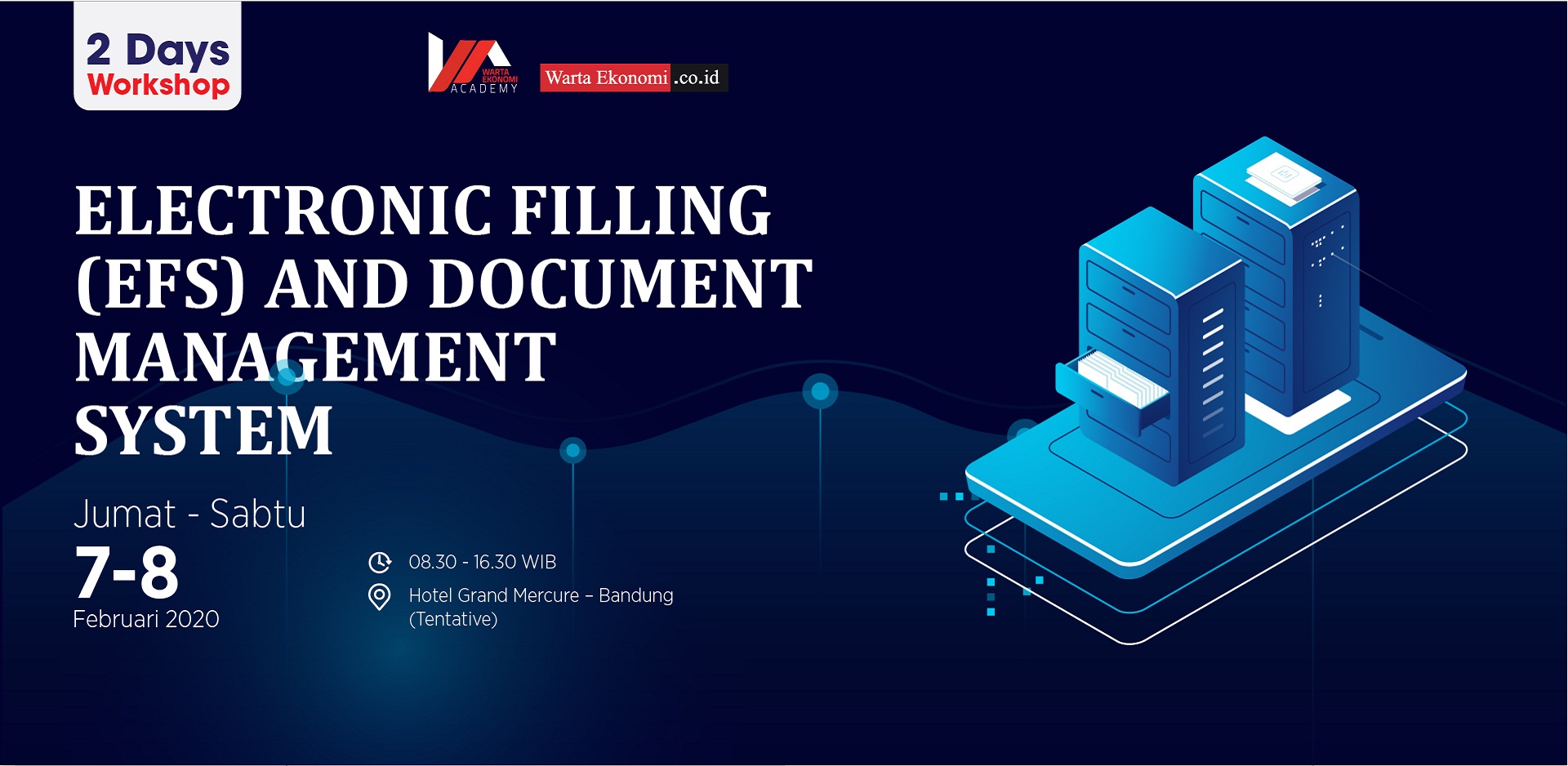
Electronic Filling (EFS) and Document Management System
OVERVIEW
Managing documents and records is the foundation of the company’s activities, because the documents and records management system has many benefits in improving work efficiency. Management records an important role for the course of an organization, sometimes in the storage and compilation of data or information is not done properly. This is why still needed a storage system and the provision of data and information effectively. In developed countries, the tendency archival document management system application electronically already widely used.
BENEFITS
By the end of this workshop, participants will be able to :
- Understand how the classification method used in the filing system
- Understand of management functions for the creating balance data records in terms of the creation, document of traffic, record keeping, forwarding, distribution, usage, storage, maintenance, displacement and destruction of records.
- The participants are also able to simplify the types and volumes of records and utilizing of data for enhanced performance and professionalism of institutions or organization with a cost effective and efficient
WHO SHOULD ATTEND
Secretary, Human Resource staff, General Affairs staff, Health and Safety staff, General administration staff, Public Relationship staff, Engineering staff, Document Controller staff, etc
COURSE OUTLINE
Introduction of document management system
- Four Pillars of Document Management System
- Benefits of Document Management System
- Type of data: Active or Non Active Data
- The players (employees, auditors, and administrators
- Work Flow of data
- Urgency and sensitivity of data
- Check in / out procedures and Information Delivery
- Storage and distribution
- Security of data
- Legal issues of data, and audit work paper
Record management the details
- Total foot steps and time required for repetitive data collection in a day /week/month
- The work flow diagram (step by step analysis)
- Recognition of problems
- Reducing the repetitive steps
- Cut costs
- Productivity improvement: Doing more with less
- Streamline administration: Fast distribution
- Improve customer service (bosses, vendors, customers, auditors)
Brainstorming session for workshop
- Current tools for record management
- Who needs the data most?
Workshop Part 1
- Identify data for sorting and labeling purposes
- Indexing practice for you and others
Essential components of record and management solutions
- Usability
- Capture
- Storage and archiving
- Distribution
- Integration and security
- Technical consideration
Implementation: Addressing your business needs
- Relocation consideration for data central system
- Scaling your project from departmental to whole company
- Train your staff and inform your bosses, vendors, customers, and auditors
- Support and maintenance
- Backup system
- Think big act locally in your department
Document and record management for future and maintenance
- Digital library
- Digital data transfer
- Scanning internal and outsourcing
- Interaction website database
- Internal and external data interaction for vendors, and customers
Workshop Part 2
- Sorting practice, the old and the smart way
- Labeling practice personal preference or general / common structure
Introduction of document and record management software
Introduction of record management tools
- High speed scanner
- Website interaction and demonstration
- Barcode scanner
Workshop Part 3: Record Management System
- Software familiarization & Practice
